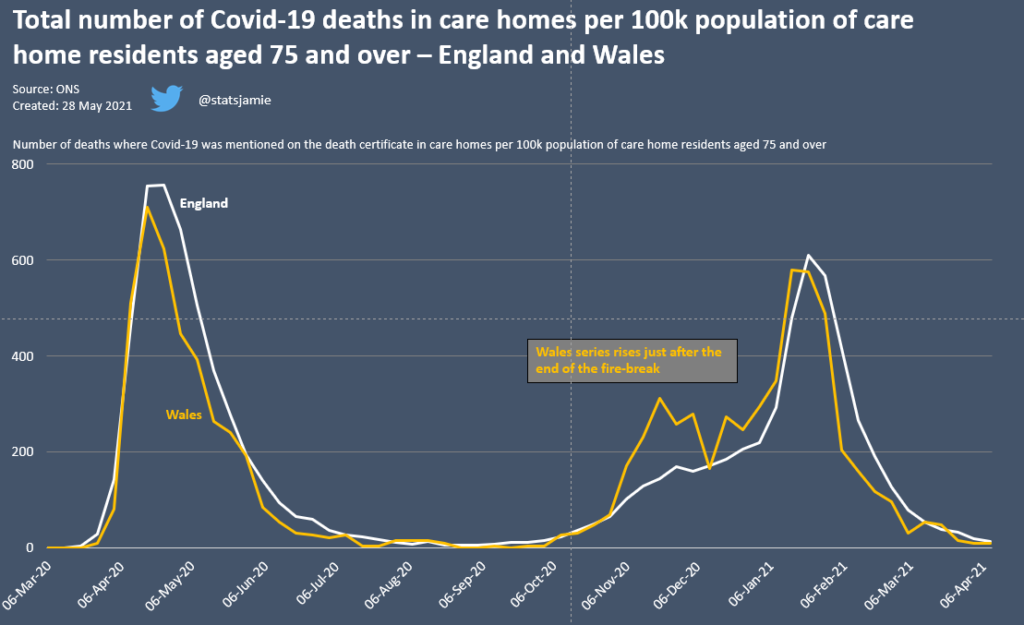Since Dominic Cummings gave evidence at a House of Commons enquiry this week, pressure has been mounting on the Health Secretary in England, Matt Hancock, regarding care home deaths related to Covid-19. But what does the data tell us on what happened?
The issue
The criticism labelled at the UK Government is that they failed to protect care home residents at the outset of the pandemic when discharging patients from hospitals back into care homes. Matt Hancock at a Downing Street press conference on Thursday explained it was not possible to test all the care home residents for Covid before discharge because the testing capacity was not in place. This put residents at risk because if hospital patients had caught the virus within hospital, were not showing any symptoms, but returned to care homes, other residents would be at a greater risk of death should they catch the deadly virus.
It would appear the same issue also happened in Wales. The Welsh Government and NHS Wales issued guidance on hospital discharge last Spring website which suggests patients were discharged from hospital into other settings before knowing the outcome of Covid-19 tests (if they carried one out). The document says:
Where applicable to the patient, COVID-19 test results are included in documentation that accompanies the person on discharge. If results are not ready in time for discharge, ensure that they are forwarded in a timely manner to the patient, GP and any care or support Providers
COVID-19 Hospital Discharge Service Requirements (Wales), Welsh Government and NHS Wales, April 2020
The data
The Office for National Statistics publishes weekly the number of deaths where Covid-19 was mentioned on the death certificate including the place of death across England and Wales. We saw the first deaths in care homes in the week ending 06 March 2020 where sadly two people died but within six weeks deaths rose to around 2,500 per week for two consecutive weeks in the middle of April.
I have crunched the numbers to look at the outcome for residents across both countries and as England is much larger than Wales, I have adjusted the data to consider the relative size of the care home resident population and as most deaths occur in those most elderly and calculated the rate of Covid deaths in relation to the population aged 75 and over.
The outcome is such that the rate of deaths in care homes is remarkably close for both countries. Wales saw a spike not seen in England after the fire-break policy within the country where there was a two-week lockdown. I am unclear exactly why this is the case and it may be a coincidence but is worth exploring in more detail.

The death rate was lower for wave two than it was for one wave but remember care homes practically shut down for loved ones to visit and there was greater testing capacity for wave two which may have helped reduce the amount of Covid getting into the care homes from staff unknowingly passing it on to residents.
For the entire population, the death rate was higher in wave two so measures to reduce the spread in care homes have saved lives. But what the data reveals is that even though care homes were closed to many visitors, when there was a significant rise in the virus circulating, it was difficult to stop deaths.
Looking at the data, any criticism labelled at the UK Government of the handling of patients back into care homes can also be put to the Welsh Government.

